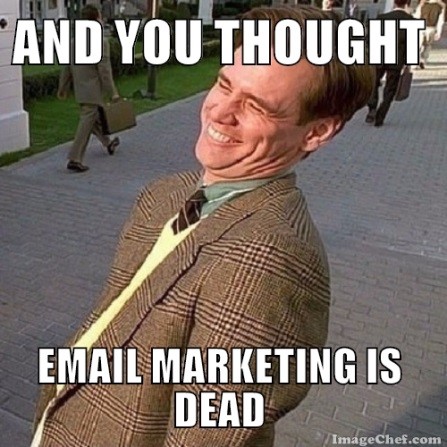Customer tracking is the method of collecting and organizing a customer's contact information. Most commonly, business owners collect names, addresses, and phone numbers. However, there is more to customer tracking than just knowing someone's name.
Using a customer database, you can use superficial information to increase sales, cultivate client relationships, create targeted marketing campaigns, and evaluate the effectiveness of existing marketing endeavors.
In order to help you take advantage of the benefits that customer tracking can deliver, I have put together a list of customer tracking techniques that you can implement without much fuss.
1. You need to keep track of your clients
It may come as a shock, but some business owners still don't track their customers. It sounds difficult, or creepy, but every business needs to be keeping track of their customers. You don't need to use a big, extravagant tool for client tracking, you can simply use Google.
G Suite is a document service offered by Google for Gmail patrons. You can create written documents, spreadsheets, forms, quizzes, and more. All for the low, low cost of free.
Not only are the tools free, saving you from spending a ton of money on Microsoft Office, but all of your documents automatically back up to your Google Drive. That means that you'll never have to worry about your customer database disappearing when lightning strikes or your laptop falls in the pool. Plus, you can access your Google Drive from anywhere.
Learn how to create a free customer database in under 5 minutes using Google Forms and Sheets.
No matter what industry you're in, your client database is one of the most valuable tools in your possession. Not only is it recommended to be organized, but you need to collect customer information in order to best market to them in the future.
2. Collect customer email addresses
Your customer's email address is like the holy grail. Having your customer's email address is similar to having a phone number; without it... you'll probably never really reach them.
Not only is it a good idea to have as many lines of communication as possible with your clients, email opens up an entirely new marketing avenue. You can easily engage your customers by sending them offers, newsletters, etc.
Although a lot of people seem to think that email marketing is 'dead', that's actually not true.
As of February 2017, the open rates of marketing emails sent from small businesses has hovered around 15-28%, depending on your industry. That means that about 1/4th of emails sent from small businesses are being opened.
Those are awesome numbers that show that email marketing is still a valid strategy.

3. Know how they found out about you
How did your customers find you?
A) They saw an ad.
B) They searched online for 'plumbers' and saw your GMB listing.
C) They got your number from a friend.
D) I have no idea.
If you answered 'D', you're doing thing's wrong. You should always be asking your customers how they found out about you.
If you're not measuring your traffic, how do you expect to know if that new marketing campaign is working? You cannot accurately gauge the return on investment (ROI) for your marketing endeavors unless you are tracking where you are getting your new customers from.
You should ask every new client where they heard about you. That way, you can...
4. Leverage that to your benefit
Many people think that if one thing is working, you should throw your money at the other avenues that need help. That's not true! You should spend your money where it counts.
For example, if you run a TV commercial, and 70% of your new customers say that they called you because of that TV commercial; it's obviously working. You should budget for that commercial to air more often in order to reach more customers.
It works the same way with internet marketing services. If the majority of customers are finding you online, you know that a lot of people are searching online for businesses like yours. If you increase your SEO marketing budget, you can reach even more of those potential clients.
But marketing budget allocation isn't the only benefit of tracking where your clients came from.
You can also use it to turn them into advocates for your business. Studies show that people trust online reviews almost as much as personal recommendations. You can learn more about why online reviews are important in this article.
- If a customer found you from Yelp, ask them to check-in. When someone checks-in on Yelp, it will prompt them to share their experience.
- If they found you through Google, ask them to leave you a review on your GMB listing.
- If they found you on Facebook, ask them to 'like' your company page for updates.
Once you know where your customers are coming from, you can approach them in ways that will result in added benefits to your company.
5. Be nosey
Learn as much about your customers as you can without being creepy. You'd be surprised the amount of useful information that you can learn just by talking to someone.
Let's pretend that you're a plumber and you were hired on to help remodel a bathroom. When talking to them, you learned that they are newly wed's and just purchased their first home. Once the bathroom is complete, they want to remodel their kitchen as well.
Now, you can notate that in your customer database. Later that year, you'll send them an email asking how they are liking their new bathroom and whether or not they've started planning their kitchen remodel. Studies show that happy customers are 60-70% more likely to become repeat customers, and you'll already have an in for their next project.
Nosiness helps build customer relationships.
If you work with a lot of customers one-on-one, you should be paying attention to the special events in their lives and notating them in your customer database. Remember that they are people, not just numbers. Something as simple as sending a card after a customer has a baby can go a long way in making you irreplaceable.
6. Follow-up with them, even if they don't buy
Okay, okay... I know what you're thinking...
"But Sarah, I don't have time to chase people who made it clear that they don't plan on becoming customers."
Luckily, you got their email address and you can easily reach out and keep them connected without wasting a lot of time.
If you created a customer database using the Google Sheets method that I linked to earlier in this article, you can follow these steps in order to quickly create an email list of your clients.
1. First, open your customer database spreadsheet and highlight the row of email addresses. Copy the row by pressing CTRL + C or right clicking and choosing copy.
If you only want to take certain ones, you can hold the CTRL button and click each email address to highlight them individually.

2. Open Gmail and click on the 'Mail' button on the left. It will open a drop-down menu which will give you the option to open your 'Contacts'. Click on 'Contacts'.

3. Down on the left-hand side, often tucked at the bottom of the side panel, you'll see a 'new group' button. Click that, and create a new group and title it something like, "No Sale Follow-Up".
You can also do separate groups of each type. For example; Kitchen Remodels, Bathroom Remodels, No-Sale, Repeat Customers, Maintenance, etc.

4. Next, click on the new group you just created. Then click on the little person icon, and paste your email addresses into the white box that appears by pressing CTRL+ V or right clicking and choosing paste.
Once you press enter, your new email addresses will be added to your contacts and the group you created.

Now, when you compose a new email, in the 'To' section, start typing the title of the group you created. Click it, and everyone in that group will be added to the email. Ta-Da!
"Now what?"
Well, now you reach out! You just want to remind them that you are there, and you are offering them something worthwhile. Most of the time, you would want to send them a deal. It can be as personal or impersonal as you'd like. Running with our plumber example, it could be something like this:
"Hello,
I hope you are doing well! The last time that we spoke, you mentioned that you were going to continue shopping around before deciding on a plumber to use for your bathroom remodel.
I just wanted to reach out to you and let you know that if you decide to use [insert business name here], I would be able to knock 5% off of our previous bid.
Please let me know if you want to take advantage of this offer. I look forward to speaking with you soon!"
That email probably isn't perfect... so I wouldn't use it word for word if you're a plumber, but you get the idea. You'll never win over potential customers if you don't reach out, to begin with.
It's also a good idea to keep track of how many responses you get to your different types of emails. That way you can get a better idea of what works and what doesn't.
7. Survey your existing/past customers
A lot of businesses make the mistake of assuming that they already know what is important to their customers. I can tell you right now, that whatever you think it is, you're probably wrong.
The best thing that you can do as a business owner is to give your past and current customers a platform to inform you of what's important to them, and then listen and adjust where you can.
I think that surveys are a good method of collecting information from your customers that they might not otherwise be so quick to divulge. Most people want to avoid conflict. If they're not happy with you, they're not usually going to tell you straight to your face. They'll most likely tell their friends, Facebook, Twitter, and leave a negative review; which is much more detrimental than hurting your feelings.
However, if you approach them with a survey, you are giving them an avenue to inform you of any missteps that may have occurred as well as vent their frustrations. Your job is to not get offended, and do you best to fix any of the problems that you can. As an added bonus... they may feel relieved that you listened and re-think leaving that negative review.
There are a lot of customer satisfaction survey platforms available out there, such as SurveyGizmo and SurveyMonkey, however, you can create a survey for free using Google Forms, much like I showed you in how to create a customer database.
Wrapping it up in a nice little bow...
I hope that you have a better understanding of why gathering information about your customers is dramatically important. I cannot stress it enough. If you're not collecting information from your customers, you are missing out on repeat business, targeted marketing, building customer loyalty, and the opportunity to correct your business practices in a way that drives customer satisfaction.


Your Comments :